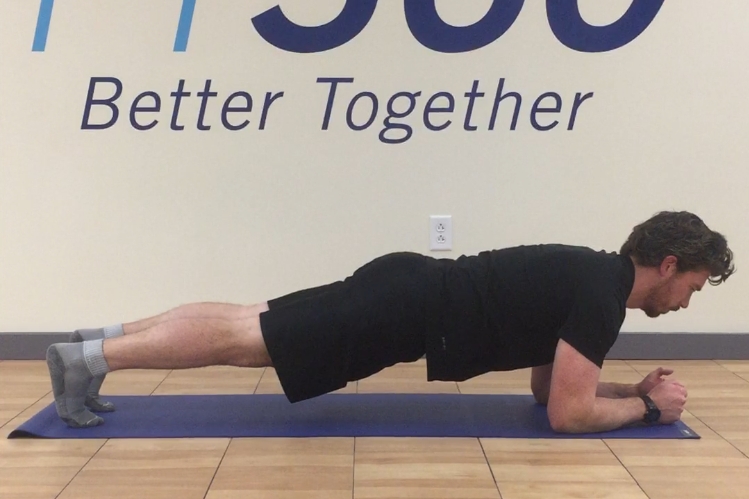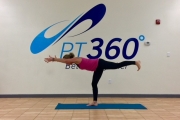Strengthening For Snow Sports

We often hear that flexibility reduces risk of injury. As a continuation of our most recent blog, Yoga For Snow Sports, written by our very own PTA, Yoga Instructor, & Health Coach Lisa Tidman, I wanted to discuss a few of my favorite strengthening exercises for the active individual participating in winter sports.
It is never too late to jump on the wellness train; whether through mindful, emotional, spiritual, environmental, or physical wellness. Yoga is a well-rounded approach to maintaining a healthy lifestyle. The stretching, strengthening, and mindfulness practice yoga provides make it a great cross-training activity for higher impact sports. We need to remember; with increased flexibility we must have increased functional stability.
As you tackle the icy slopes this winter or are starting to think about gearing up for the mountain biking, hiking, and kayaking season, we must pay attention to our bodies. Lisa’s last blog highlighted how skiing and snowboarding positions will often put you in a bent over position, resulting in the quad and hip flexors becoming overworked and tight. Being constantly tight in these muscles can cause the hamstrings, glutes, and core to become weak. As we start to stretch out those tight hip flexors, quads, or hamstrings with yoga and foam rolling; we must also focus on strengthening those muscles and the core to create symmetry within the body.
Here are a few exercises I personally practice and recommend to keep you feeling great on the slopes.
Core
The Bird Dog is an introduction into proper core stabilization, the plank is an often a progression to increased core stability.
How to perform: The Bird Dog
On your hands and knees, think about making a square with your body. Engage your core muscles by pulling your stomach up and in. Hold this core position while breathing. Stage one - only move your arms without your trunk rotating or shifting. Stage two – kick your legs backwards without your trunk rotating or shifting. Stage three – opposite arm and leg lifts simultaneously without your trunk rotating or shifting. Try 10 repetitions each.
How to perform: The Plank
On your elbows, tighten your stomach muscles by pulling your stomach up and in. Lift your hips off the ground, remember to breath. The side plank is performed in the same manner, in a sidelying position tighten your core and lift your hips off the ground. Try to hold each position for 15-60 seconds.
Glute Medius
Monster walks, both side to side and forwards/backwards, are great resistance exercises to strengthen the Glute Medius muscle. The Glute Medius muscle is important in knee, hip, and low back control.
How to perform: The Monster Walk
Place a resistance band around your ankles. The darker the band color, the more resistance the band will provide. Keep your knees slightly bent, feet straight ahead, step side to side. Big step, small step, keep tension on the band at all times. Walk 10 feet in each direction.
When walking forward and backward, think about walking in this pattern > <. Right Leg inward, right leg outward in a V pattern. Walk 10 feet in each direction.
Hamstrings
The posterior chain is one of the most important muscle groups to strength for ACL injury prevention.
How to perform: Physio Ball Hamstring Bridge
The physio ball will add a dynamic core stabilization component to strengthening the hamstrings. On your back, place your legs on top of the physio ball. The closer the physio ball is to your knees, the easier the exercise. With your legs on top of the physio ball, engage your core muscles by flattening your back against the ground, squeeze your glutes, lift your butt off the ground. Try 1-2 sets of 10 repetitions.
How to perform: Physio Ball Hamstring Bridge with a Curl
To make this exercise harder, after lifting your butt off the ground, pull the ball towards you while maintaining the bridge position. Try 1-2 sets of 10 repetitions.
How to perform: Body Weight Squat
When performing a squat, think about reaching your butt backwards for a chair. Engage your core, keep your back flat, head up, chest up. Flex at the hips and reach your butt backward for a chair. Bend your knees- your knees should not go over your toes. You might feel as though you are going to fall backwards, keep your nose over your toes. Attempt 10-15 body weight squats.
How to perform: Body Weight Squat Jump
Once you have mastered body weight squats, attempt to add a squat jump into the routine.
Quads
Quad strength is very important for knee control and stability during skiing and snowboarding.
How to perform: Eccentric lowers
Eccentric lowers, also known as step downs, can be performed on the bottom stair of your house. Between your banister and wall stand on one leg, place your hands on your hips and think about keeping your pelvis level. Do not let your knee advance beyond your toes, reach your butt backwards as you bend your knee. This will feel very similar to a single leg squat. Try 1-2 sets of 10 repetitions, you might not be able to step down all the way.
How to perform: BOSU Split Squat
The BOSU split squat is an advance strengthening exercise that combines squats, lunges, glute med, and core strength. During this exercise make sure you have a sturdy support structure nearby for safety. Place one foot over the center of the BOSU, place one leg behind you on a bench, chair, or box. The BOSU should be no more than 2-3 feet away from the chair/box/bench. During the lunge, the knee should not advance over the foot on the BOSU, sit back as your perform this exercise. Do not allow your knee to fall inward. Try 1-2 sets of 10 repetitions.
Plyometric Exercises
Plyometric exercises are important dynamic and functional strengthening exercises to increase power. This will result in improved turning ability on the slopes.
How to perform: Box Jumps Forward and Lateral
Pick a platform or box between 1-2 feet high. Feet should be shoulder width apart. Squat down, and use your arms to drive upwards as you push off and jump. Landing should be quiet. Land on the balls of your feet and roll to the back of your heels as your knees bend and absorb the impact. Do not allow your knees to advance past your knees.


